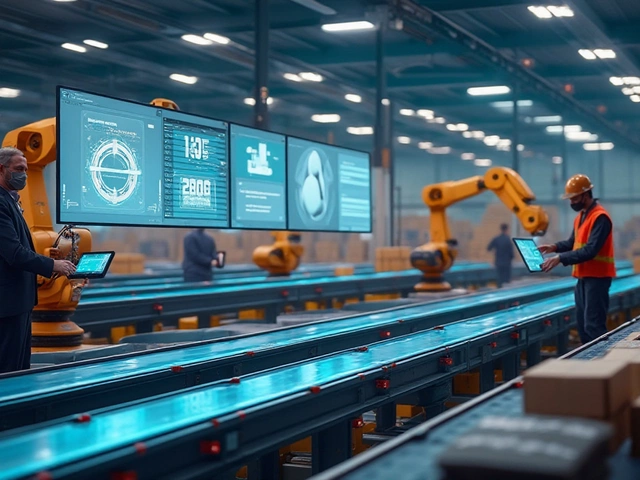Software Trends That Are Changing Logistics in 2025
If you’re trying to keep your removal or delivery business ahead of the curve, you need to know which software tools are actually making a difference. From AI‑driven demand planning to cloud‑based warehouse management, the right tech can shave hours off a move, cut costs, and keep customers happy.
One big shift is the rise of integrated platforms that combine transportation management (TMS), warehouse management (WMS), and ERP into a single dashboard. Instead of juggling three separate systems, crews can see every shipment, inventory level, and invoice in one place. That means fewer mistakes, faster dispatch, and real‑time visibility for both you and your clients.
AI and Predictive Analytics
Artificial intelligence is no longer a buzzword; it’s a practical tool for forecasting demand and routing trucks. AI looks at historical moves, traffic patterns, weather forecasts, and even local events to suggest the most efficient routes. The result? Less dead‑head mileage and more on‑time deliveries. Small movers can access these tools through subscription‑based services, so you don’t need a dedicated data science team.
Cloud‑First Warehouse Management
Traditional on‑premise WMS can be expensive to maintain. Cloud‑based WMS solutions let you scale up during peak moving seasons and scale down when things quiet down, all while keeping data secure and accessible from any device. Features like barcode scanning, real‑time inventory updates, and automated pick‑pack workflows are now standard, helping you move items faster and with fewer errors.
Another trend worth mentioning is the push toward “smart logistics” – sensors and IoT devices that feed live data back to your software. Temperature alerts for fragile goods, weight sensors for pallet stability, and GPS trackers for real‑time location updates are becoming commonplace. When a sensor flags an issue, the system can automatically reroute a truck or alert a driver, preventing costly delays.
For e‑commerce businesses, the integration of returns management into the main logistics software is a game‑changer. Customers expect easy returns, and a unified system can generate return labels, schedule pickups, and restock inventory without manual entry. This not only speeds up the process but also gives you better insight into product performance.
Finally, cybersecurity can’t be ignored. As more logistics data moves to the cloud, providers are offering built‑in encryption, multi‑factor authentication, and regular vulnerability scans. Choosing a vendor with strong security practices protects both your business and your clients’ sensitive information.
Bottom line: the software trends that matter most for movers and logistics firms are AI‑powered routing, cloud‑first WMS, IoT‑enabled visibility, seamless e‑commerce returns, and robust cybersecurity. Adopt the tools that fit your size and budget, and you’ll see faster moves, lower costs, and happier customers.
Ready to upgrade? Start by listing the pain points in your current workflow, then match those to the features offered by leading logistics platforms. A small trial run can show real benefits before you commit to a full rollout.
April 1, 2025
Evelyn Wescott
0 Comments
SAP has been a staple in warehouse management for years, but is it facing a decline? As digital transformation accelerates, newer technologies and solutions are emerging, challenging the dominance of SAP in the warehouse industry. This article explores current trends, potential reasons for SAP's perceived decline, and what options businesses need to consider to stay competitive. Dive into insights on where SAP stands today and future-proof your warehouse operations.




